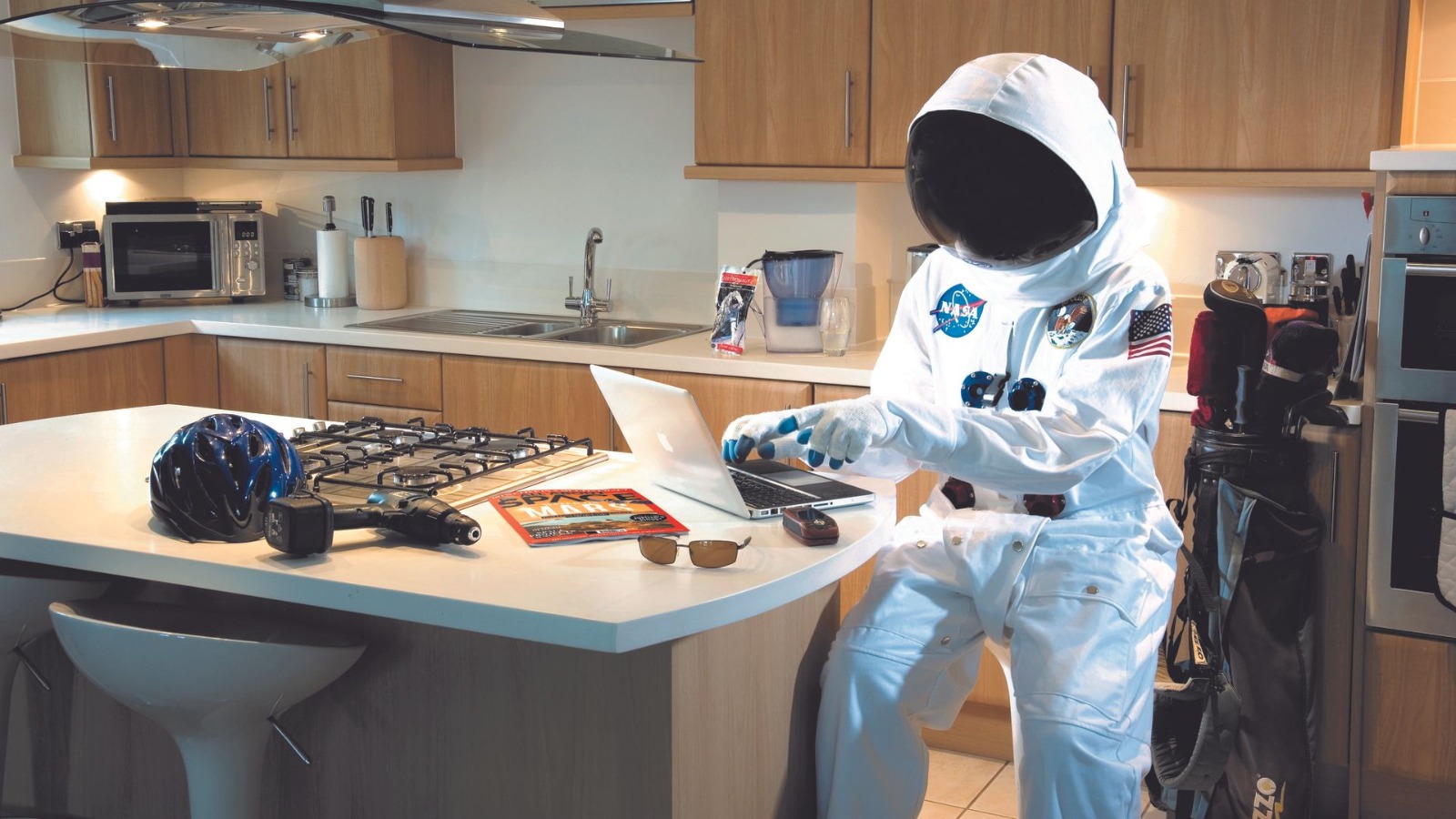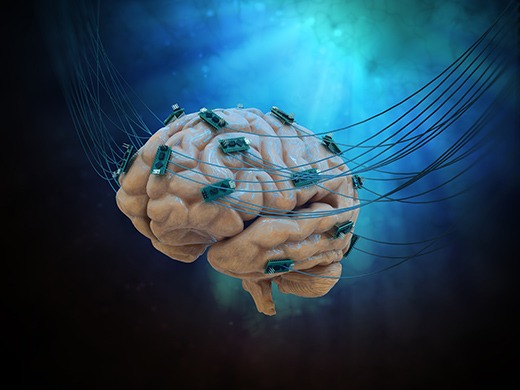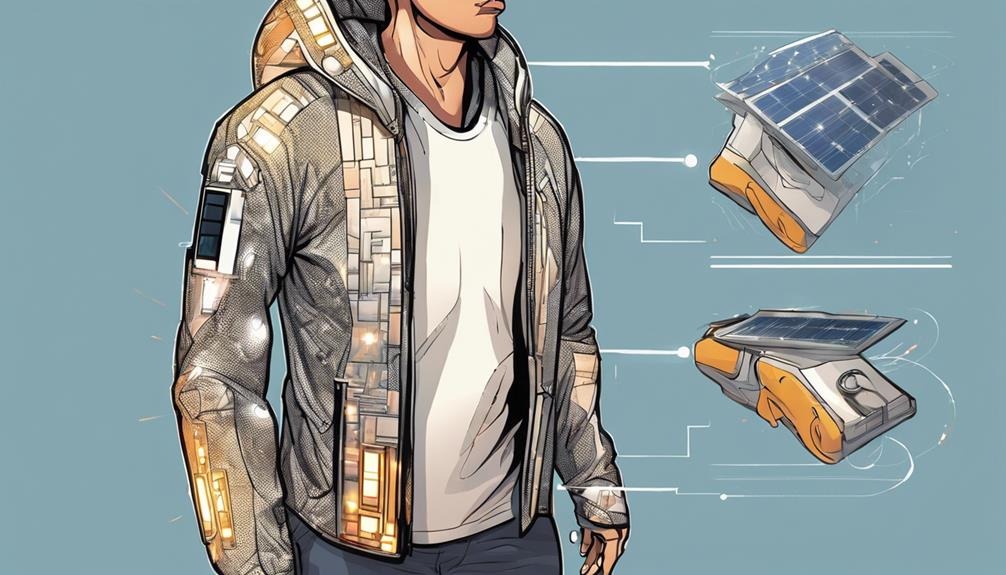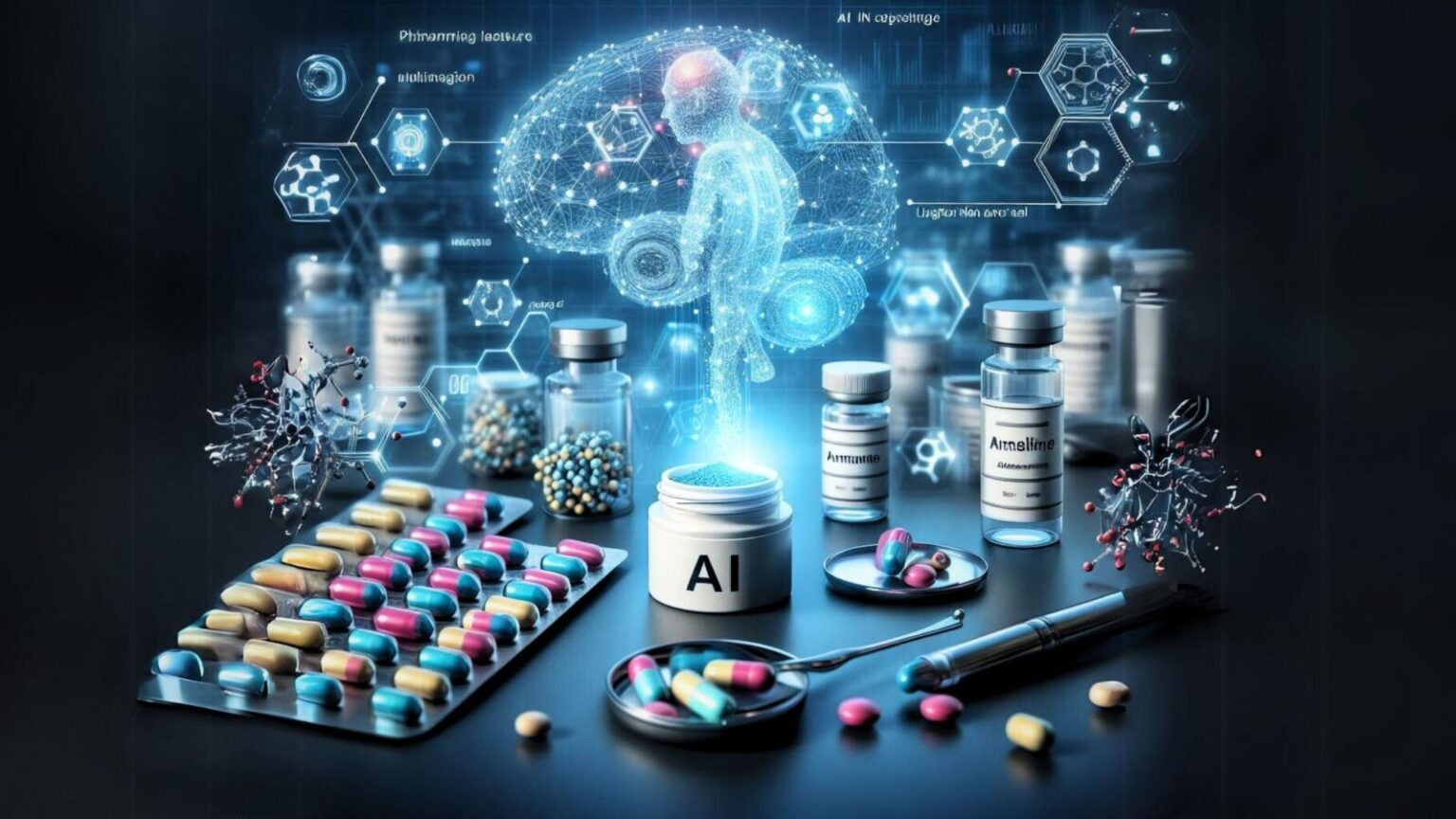
How Space Tech Is Inspiring Everyday Gadgets.
From mattresses and running shoes to GPS navigation and clean water, countless everyday gadgets trace their roots back to innovations first designed for space exploration. Technologies created to help astronauts survive the extreme conditions of space have quietly transformed life on Earth, proving that reaching for the stars often improves the way we live at home.
✨ Raghav Jain

Introduction
When humanity first set its sights beyond Earth’s atmosphere, the immediate focus was survival—how to breathe in space, eat in zero gravity, and live in a vacuum. Over the decades, however, the technology developed for space exploration has trickled down into our daily lives in remarkable ways. Today, countless gadgets we take for granted owe their existence to research and innovation originally intended for astronauts and spacecraft. From the memory foam in our mattresses to GPS navigation in our cars, space tech has silently become an integral part of everyday living.
This article explores in detail how space innovations inspire and shape everyday gadgets, the areas where these technologies are applied, and how the future of consumer devices may continue to be influenced by humanity’s journey into space.
1. Origins of Space-Inspired Innovation
The global space race in the mid-20th century accelerated technological breakthroughs. Agencies like NASA, ESA, and later private companies such as SpaceX and Blue Origin, faced challenges that required innovative solutions. These solutions often had secondary benefits, leading to what NASA famously calls “spinoffs”—technologies adapted for consumer or industrial use on Earth.
Examples include:
- Miniaturization of electronics (developed for satellites, now in smartphones).
- Thermal insulation materials (designed for spacecraft, now used in homes and clothing).
- Water purification systems (initially for space missions, now vital for disaster zones).
These spinoffs show how high-investment projects in space often have unintended benefits that transform life on Earth.
2. Space Tech in Everyday Household Items
a) Memory Foam Mattresses and Cushions
In the 1960s, NASA developed viscoelastic foam to cushion and protect astronauts during launch. Today, memory foam is used in mattresses, pillows, helmets, and even shoe insoles, offering enhanced comfort and shock absorption.
b) Cordless Tools
Space missions required portable, battery-powered equipment. NASA worked with Black & Decker to create cordless drills and vacuum cleaners for extracting samples on the Moon. Today, cordless appliances dominate households and construction sites.
c) Scratch-Resistant Lenses
Astronaut helmet visors needed coatings to withstand space debris and scratches. This led to the development of scratch-resistant plastics, which are now standard in prescription glasses and sunglasses.
d) LED Lighting
LEDs were designed to grow plants in space using energy-efficient, low-heat light. Today, LED bulbs dominate the lighting industry, saving electricity and reducing environmental impact.
3. Space Tech in Health and Wellness
a) Infrared Ear Thermometers
Infrared sensors used to measure the temperature of stars inspired the ear thermometer, which detects infrared energy from the eardrum, providing quick and accurate readings.
b) Artificial Limbs
Robotics and materials science developed for space led to advancements in prosthetics, making them lighter, more flexible, and durable.
c) Portable Medical Devices
Miniaturized electronics and monitoring systems originally used in spacecraft helped create devices like wearable heart monitors and insulin pumps.
4. Space Tech in Transportation
a) GPS Navigation
Global Positioning System technology, based on satellites orbiting Earth, has become a daily necessity for navigation in cars, smartphones, and even airplanes.
b) Anti-Icing Systems
NASA’s research into materials to prevent ice build-up on aircraft wings has been applied to cars, airplanes, and even power lines in cold climates.
c) Improved Tires
NASA collaborated with Goodyear to develop durable, long-lasting tires using space-grade materials. This research gave birth to radial tires that are stronger and more fuel-efficient.
5. Space Tech in Food and Water
a) Freeze-Dried Food
To supply astronauts with nutritious, lightweight meals, NASA perfected freeze-drying technology, which preserves food without compromising taste. Today, it is common in instant coffee, packaged snacks, and emergency rations.
b) Water Filtration
Portable water purification systems, using filters designed for spacecraft, are now essential for rural areas, disaster zones, and hikers.
c) Nutritional Supplements
Studies of astronaut health in space led to fortified nutritional products and supplements now used by athletes and health-conscious consumers.
6. Space Tech in Sports and Fashion
a) Running Shoes
NASA materials designed for shock absorption inspired companies like Nike and Adidas to design space-age athletic shoes with improved cushioning.
b) Sportswear Fabrics
Moisture-wicking fabrics and thermal insulation materials developed for astronauts are now found in sports gear and winter clothing.
c) Safety Helmets
Impact-resistant plastics from space helmets are now standard in bicycle helmets, motorcycle helmets, and sports headgear, saving countless lives.
7. Space Tech in Communication and Computing
a) Satellite Communication
From live sports broadcasts to video calls, satellite communication—developed for space exploration—has become the backbone of modern media and internet connectivity.
b) Camera Sensors
The tiny digital sensors created to take high-quality images of planets and stars with minimal equipment size are now in smartphone cameras, enabling billions to capture moments daily.
c) Wireless Headsets
Astronauts needed hands-free communication. This led to early designs of wireless headsets, now used in business, gaming, and everyday calls.
8. Space Tech and Environmental Solutions
a) Solar Panels
NASA’s push for renewable energy sources in space made solar technology more efficient, affordable, and accessible, now powering homes and gadgets worldwide.
b) Insulation Materials
Radiant barrier insulation, developed to regulate spacecraft temperature, is widely used in buildings to reduce energy costs.
c) Climate Monitoring
Satellites track climate patterns, natural disasters, and resource use. This data informs apps, weather forecasts, and agricultural technologies.
9. Space Tech in Security and Safety
a) Fire-Resistant Materials
Materials designed to protect astronauts from extreme heat are used in firefighter suits and industrial safety gear.
b) Disaster Detection Systems
Satellite imaging enables early detection of earthquakes, floods, and storms, providing essential warning systems.
c) Smoke Detectors
NASA developed the first adjustable smoke detectors for Skylab, and now they are standard in homes, preventing countless tragedies.
10. The Future: How Space Will Continue to Inspire Gadgets
Space research continues to inspire the next generation of everyday devices:
- 3D Printing in space could revolutionize manufacturing on Earth, reducing waste.
- Space-grown food technology may create sustainable agriculture methods.
- Radiation protection materials could make safer medical imaging devices.
- AI-driven space navigation could enhance autonomous vehicles on Earth.
As commercial spaceflight and lunar colonization progress, more innovations will inevitably find their way into consumer products.
When we think of space exploration, images of rockets, astronauts, and distant planets usually come to mind, but what is often overlooked is how deeply the technology developed for space has seeped into our everyday lives, shaping the gadgets and comforts we now take for granted. Since the dawn of the space race, agencies like NASA and ESA, along with private companies like SpaceX and Blue Origin, have faced the unique challenge of creating tools, materials, and systems that could withstand the harshest conditions known to humankind—vacuum, radiation, zero gravity, and extreme temperatures—and these challenges often produced innovations that later found use on Earth in ways their inventors never imagined. For instance, NASA’s development of viscoelastic foam in the 1960s, originally intended to cushion astronauts during the intense forces of launch and re-entry, gave birth to what we now know as memory foam mattresses, pillows, and even shoe insoles, a technology that has revolutionized comfort in homes and hospitals worldwide. Similarly, the need for portable, battery-powered equipment in space missions led NASA and Black & Decker to design the first cordless drills, which paved the way for a wide range of cordless appliances like vacuum cleaners and household tools. Another example comes from astronaut helmet visors, which required special coatings to prevent scratches from micro-debris; the same principle is now applied to scratch-resistant lenses for glasses and sunglasses, something millions of people use every day. Even the lighting industry owes a lot to space research, as LED technology, which was initially developed to grow plants efficiently in space by using low energy and low heat, has now become the global standard for energy-saving household and commercial lighting. Healthcare, too, has benefited enormously from space research: infrared sensors that once measured the heat of distant stars inspired the infrared ear thermometer, allowing doctors and parents to take quick, non-invasive temperature readings; robotics and lightweight material design from space exploration led to more advanced prosthetic limbs that are flexible, durable, and lifelike; and the miniaturization of spacecraft electronics made possible portable medical devices like wearable heart monitors and insulin pumps, which are lifesaving for millions. Transportation has also been transformed, most notably by GPS, which relies on satellites orbiting Earth to provide real-time navigation in cars, airplanes, smartphones, and even shipping systems, making it one of the most widely used space spinoffs. NASA’s research into anti-icing materials for aircraft wings is applied today in aviation, automobiles, and energy systems in cold regions, while collaborations with tire manufacturers like Goodyear produced stronger, longer-lasting radial tires that improve fuel efficiency and safety. In the world of food and water, astronauts’ need for lightweight, long-lasting meals led to the perfection of freeze-drying technology, which today is not only vital for emergency rations and military use but also for everyday products like instant coffee, packaged snacks, and hiking meals; meanwhile, water filtration systems developed for spacecraft life support now provide clean drinking water in disaster-stricken and rural areas across the globe. Even sports and fashion industries have space to thank—NASA’s work on shock-absorbing materials inspired the design of cushioned running shoes, advanced thermal and moisture-wicking fabrics meant for astronaut suits are now mainstream in athletic wear, and the tough plastics from space helmets are applied to safety gear such as motorcycle and bicycle helmets, saving lives daily. Communication and computing technology also owe much to space exploration: the same satellites that once relayed signals from astronauts now enable international broadcasts, weather tracking, and global internet connectivity; miniature camera sensors originally designed to take high-quality images of planets without bulky equipment are now embedded in billions of smartphones; and hands-free wireless headsets, which astronauts needed for communication in space, evolved into Bluetooth earpieces and gaming headsets we use today. Beyond convenience, space tech has also made our world safer and more sustainable—solar panels were refined and made more efficient thanks to NASA’s work on renewable energy for satellites and spacecraft, radiant barrier insulation created to regulate spacecraft temperature is now used in homes to reduce energy bills, and Earth-monitoring satellites track climate change, agricultural conditions, and natural disasters, providing data that saves lives and informs global policy. Safety innovations also abound: fire-resistant materials designed for spacecraft are used in firefighter suits and industrial gear, adjustable smoke detectors developed for Skylab are now standard in homes and offices, and satellite imaging enables early disaster detection, giving communities precious time to prepare. Looking forward, the influence of space exploration on everyday gadgets is far from over—new technologies being tested for lunar bases and Mars missions, such as 3D printing to create tools and structures in zero gravity, may revolutionize manufacturing on Earth by reducing waste; experiments with growing food in space could reshape agriculture in resource-limited regions; advanced radiation shielding may improve medical imaging and cancer treatment; and AI-driven navigation systems being designed for autonomous spacecraft could be adapted to enhance driverless cars. In every field, from the mattress you sleep on and the shoes you wear, to the GPS in your phone and the clean water you drink, space technology has woven itself into the fabric of modern life, proving that when humanity reaches for the stars, it not only expands its cosmic horizons but also discovers better ways to thrive on Earth, turning the once unimaginable into the ordinary.
When we think of space exploration, most of us imagine rockets soaring into the sky, astronauts floating in zero gravity, or telescopes capturing breathtaking images of distant galaxies, but what often goes unnoticed is the profound and practical influence that space technology has had on the gadgets and conveniences we use every single day on Earth, because the innovations created to overcome the harsh realities of space—extreme temperatures, limited resources, radiation, and the vacuum of outer space—have consistently spilled over into everyday life in ways that were never originally intended, yet have become so indispensable that we can hardly imagine living without them. Consider memory foam, first developed by NASA in the 1960s to provide cushioning for astronauts during the brutal forces of launch and re-entry, which has now found its way into millions of mattresses, pillows, and even medical cushions, revolutionizing comfort and support in homes and hospitals alike; or cordless power tools, which originated from NASA’s partnership with Black & Decker to create portable drills and vacuums for extracting lunar rock samples, and which have since become standard in households, construction sites, and workshops around the world, liberating us from tangled cords and limited mobility. The lenses in your glasses are likely protected by scratch-resistant coatings born out of the need to shield astronauts’ helmet visors from space debris, while the LED bulbs illuminating your home trace their lineage to plant-growth experiments aboard spacecraft, where engineers needed a light source that was efficient, durable, and generated minimal heat. Space research has also had a transformative effect on healthcare: infrared thermometers, which can take a patient’s temperature in seconds without contact, were inspired by sensors designed to measure the thermal energy of stars; prosthetic limbs became more flexible, durable, and lifelike thanks to advancements in robotics and materials science driven by space exploration; and the miniaturization of spacecraft electronics paved the way for portable medical devices such as insulin pumps, wearable heart monitors, and compact diagnostic machines, which save countless lives every day. Transportation, too, has been reshaped by space-derived innovations, with GPS satellites forming the backbone of navigation systems in smartphones, cars, airplanes, and ships, guiding everything from daily commutes to international shipping routes, while research into ice-resistant materials for spacecraft surfaces has been applied to aviation safety and even to prevent ice build-up on cars and power lines in cold regions, and collaborations between NASA and tire manufacturers like Goodyear yielded tougher, more fuel-efficient radial tires that millions of vehicles now rely on. Even the food on our plates and the water we drink reflect space ingenuity: freeze-dried meals, perfected for space missions to ensure lightweight, nutritious, long-lasting rations, are now staples in camping gear, military supplies, and even instant coffee, while advanced water filtration systems originally designed for spacecraft life support are today used to provide clean water in disaster zones and rural communities around the globe. The influence of space exploration extends into sports and fashion as well, where shock-absorbing materials first tested for astronauts’ gear inspired the cushioning in running shoes from brands like Nike and Adidas; moisture-wicking and thermal fabrics once designed for astronaut suits now appear in athletic wear and outdoor gear; and the same impact-resistant plastics that protected astronauts’ heads are now found in bicycle, motorcycle, and sports helmets, saving lives on Earth just as they did in orbit. Meanwhile, communication and computing technologies have also flourished under the legacy of space exploration: the tiny yet powerful digital camera sensors developed to photograph distant planets without bulky equipment became the foundation for smartphone cameras, enabling billions of people to capture memories instantly; the satellites that once relayed communications between mission control and astronauts now facilitate global broadcasting, weather forecasting, and internet connectivity; and hands-free wireless headsets, born out of the need for astronauts to communicate in space without using their hands, evolved into the Bluetooth earpieces and gaming headsets we use daily. Environmental sustainability has also been bolstered by space tech, with solar panel efficiency dramatically improved thanks to NASA’s work on renewable power for satellites, radiant barrier insulation developed to regulate spacecraft temperatures now reducing energy costs in homes, and Earth-observing satellites tracking deforestation, pollution, and climate change, equipping scientists and policymakers with crucial data. Safety innovations are equally significant, as fire-resistant materials designed to protect astronauts during re-entry are now standard in firefighter suits, adjustable smoke detectors first built for Skylab are now installed in homes worldwide, and satellite imaging enables early detection of earthquakes, floods, and hurricanes, providing life-saving warnings. Looking toward the future, the next wave of space-driven innovation is poised to influence consumer gadgets even more dramatically: 3D printing, already tested aboard the International Space Station to create tools and parts in zero gravity, could revolutionize manufacturing on Earth by reducing waste and enabling on-demand production; space-grown food experiments may pave the way for sustainable agriculture solutions in resource-scarce regions; radiation shielding developed for spacecraft could lead to safer medical imaging devices and cancer treatments; and artificial intelligence systems designed to pilot autonomous spacecraft may advance driverless cars and robotics here on Earth. The truth is, the influence of space technology on everyday gadgets demonstrates the remarkable principle that by striving to solve humanity’s most extreme challenges beyond our planet, we inadvertently create solutions that make life better, safer, and more efficient at home. From the mattress you sleep on and the sneakers you run in, to the GPS guiding your car and the clean water flowing from your tap, space tech has woven itself into the fabric of modern life, a constant reminder that our quest to reach the stars is not just about exploring the cosmos, but also about discovering innovative ways to thrive on Earth, proving once again that space exploration is not an expense but an investment in our collective future.
Conclusion
From the mattress you sleep on to the GPS guiding you through traffic, space technology has deeply woven itself into the fabric of daily life. Many of these innovations were never intended for everyday use but emerged as by-products of solving the extreme challenges of space travel.
The impact ranges across industries—healthcare, transportation, food, clothing, and entertainment—all benefiting from space-driven innovations. This demonstrates how human exploration, driven by curiosity and survival, creates ripple effects that improve life on Earth.
The future promises even greater integration of space-derived technologies, particularly as we enter an era of private space exploration, sustainable living, and AI-driven advancements. In essence, when humanity looks up at the stars, it not only dreams of the cosmos but also discovers better ways to live on Earth.
Q&A Section
Q1: Why does space research lead to so many useful everyday gadgets?
Ans: Because space missions face extreme conditions (vacuum, radiation, limited resources), they require highly innovative solutions. These solutions often have applications beyond space, leading to technologies that improve everyday life.
Q2: What is the most widely used space-inspired technology today?
Ans: GPS navigation is arguably the most impactful space-derived technology, integrated into smartphones, cars, airplanes, and shipping systems worldwide.
Q3: How has space tech improved healthcare?
Ans: From infrared thermometers to prosthetics and portable medical devices, space-driven technologies have advanced diagnostics, monitoring, and treatment in modern medicine.
Q4: Are freeze-dried foods only useful for astronauts?
Ans: No. Freeze-drying is now common in instant coffee, packaged snacks, and emergency survival kits, making food lightweight, easy to store, and long-lasting.
Q5: Will future space missions continue to influence consumer gadgets?
Ans: Absolutely. Technologies like space farming, 3D printing, radiation protection, and AI-based navigation are likely to create new consumer products in the coming decades.
Similar Articles
Find more relatable content in similar Articles

Neurotechnology: Connecting th..
Neurotechnology is revolutioni.. Read More

Solar-Powered Wearables: Can T..
Solar-powered wearables are re.. Read More

Holographic Displays: Will You..
“Exploring the Future of Commu.. Read More

AI in Drug Discovery: Faster C..
Artificial Intelligence is rev.. Read More
Explore Other Categories
Explore many different categories of articles ranging from Gadgets to Security
Smart Devices, Gear & Innovations
Discover in-depth reviews, hands-on experiences, and expert insights on the newest gadgets—from smartphones to smartwatches, headphones, wearables, and everything in between. Stay ahead with the latest in tech gear
Apps That Power Your World
Explore essential mobile and desktop applications across all platforms. From productivity boosters to creative tools, we cover updates, recommendations, and how-tos to make your digital life easier and more efficient.
Tomorrow's Technology, Today's Insights
Dive into the world of emerging technologies, AI breakthroughs, space tech, robotics, and innovations shaping the future. Stay informed on what's next in the evolution of science and technology.
Protecting You in a Digital Age
Learn how to secure your data, protect your privacy, and understand the latest in online threats. We break down complex cybersecurity topics into practical advice for everyday users and professionals alike.
© 2025 Copyrights by rTechnology. All Rights Reserved.